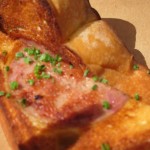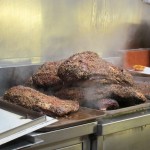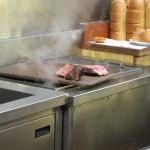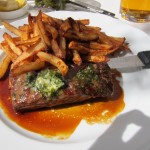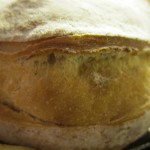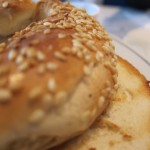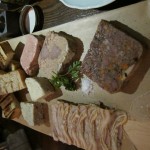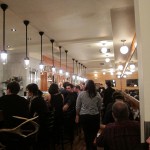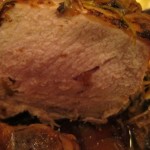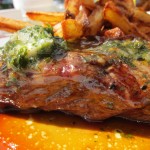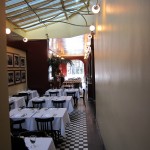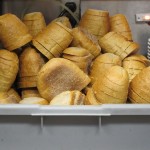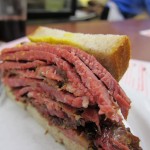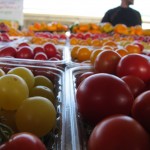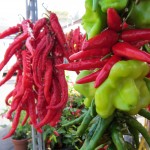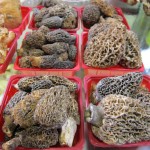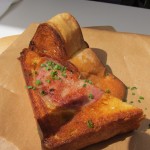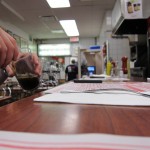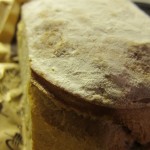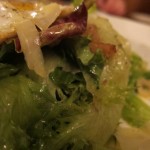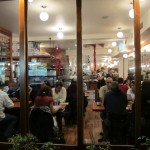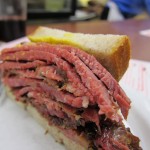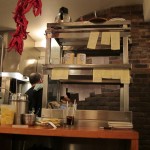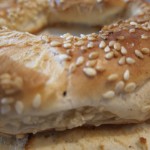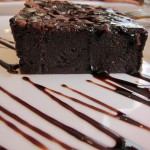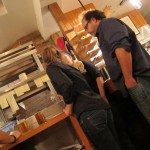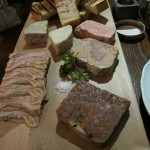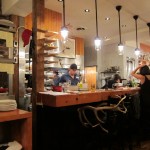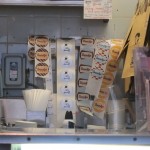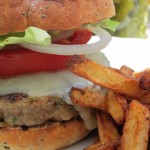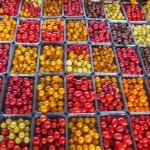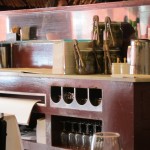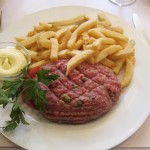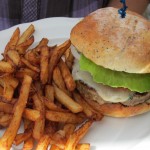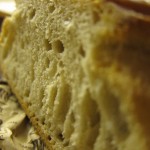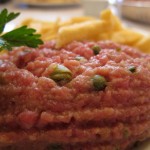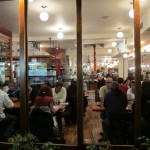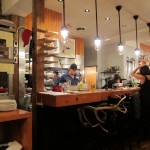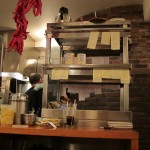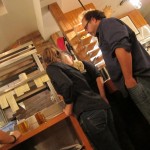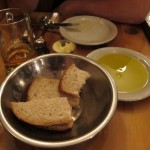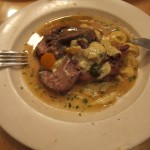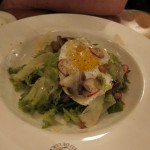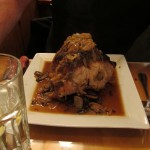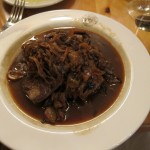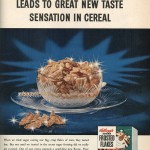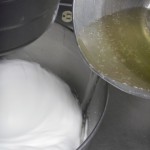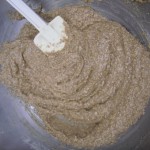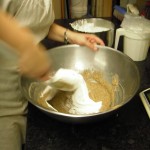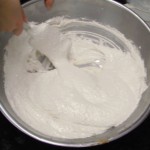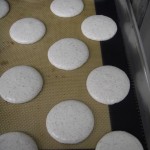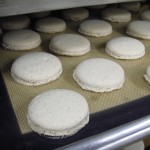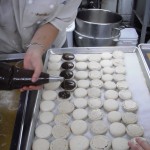On a mission to stifle a burger craving we found ourselves driving by a little place in the east end of Toronto known as “The Burger’s Priest” (Queen and Coxwell). I definitely cannot stress enough how small this restaurant is, but somehow it seats six and feeds many more. The place prides itself on keeping their burgers as simple as possible in order showcase their freshly ground beef and stay away from the previously frozen “meat” that is normally served in most burger joints.
A large griddle, a few deep fryers, a prep table and a cash register hide behind a slightly opaque partitioning wall that separates the kitchen from the dining area in this incredibly small restaurant. However, you barely have time to feel claustrophobic before the wonderful aroma of beef sizzling on the griddle takes over you and forces instant salivation. The friendly service, warm atmosphere and catchy music all put you at ease despite the lack of available personal space.
So did they redeem the burgers, as their slogan promises to?! Well, to be honest, not entirely. The patty in itself was phenomenal, cooked to perfection and definitely secreting nothing but beefy goodness. One very important element they hadn’t overlooked was the lack of strong spices hiding the true flavours of the meat. Since the patties are fairly small in size, the double decker is definitely advocated and recommended. However, despite their tasty beef, the burger was assembled on fairly poor and generic white bread bun, making the whole sandwich a fairly messy let down. I really won’t even mention my true reaction to the slice of processed “cheddar” cheese that was hidden in the depths of my condiments but let’s just say, I wasn’t too impressed.
The entire menu is strictly based on their beefy burger and the vegetarian option of a protobello mushroom and cheese sandwich battered and deep fried. Your choices are very limited but it does make sense to limit possibilities in such a small restaurant in order to cater to all your customers as quickly as possible and free up some breathing room. All combos come with Yukon Gold matchstick fries which are divine and obviously a drink. Priced between 10 and 15 dollars the meal is definitely affordable but might not necessarily completely fulfill your hunger.
Overall, if you find yourself in need of a snack and are in that neighbourhood, the Burger’s Priest is definitely a place to stop by. Grab some cash as they don’t take any cards (or debit) and enjoy an above average burger.
